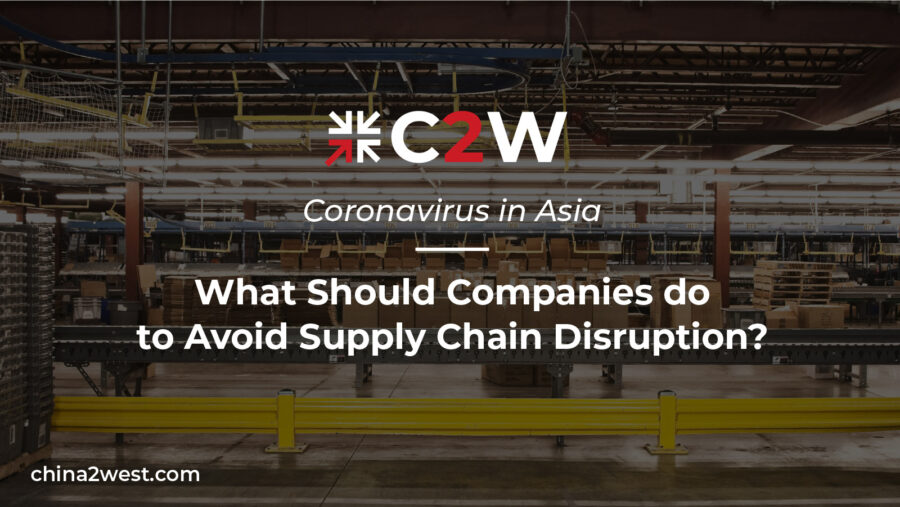Achieving business objectives is relatively impossible without a successful supply chain. If you want to reach your business goals, you need to manage your suppliers effectively.
Supply chain management involves planning for downtime and knowing what to do if a disruption occurs.
With many supply chain industry challenges out there, it’s important to know how to handle them. Keep reading to learn what you can do.
Create an Emergency Plan
To reduce disruption and help you face supply chain industry challenges, create a risk management plan. The PPRR (prevention, preparedness, response, and recovery) planning model is popular for emergencies.
The model allows manufacturers to avoid supply chain problems that they can control and prepare plans for ones that they cannot. The idea is to return your supply chains to their normal capacity with as little downtime as possible.
Depending on your specific risks, a risk management plan might focus on internal or external problems. External risks like weather events, labor shortages, and geopolitical conflicts are easier to plan for with the right information.
Internal risks, like if your management changes, can impact your supply chain as well. Create a plan for if this situation occurs so you can reduce or eliminate known risks.
Use Multiple Suppliers
Relying on a single supplier for your business products is not ideal. If this supplier were to fail to meet deadlines, you won’t have a backup plan in place.
Diversify your suppliers, but try to keep your relationships with each supplier positive.
Some suppliers will increase their prices with lower order volumes, so you’ll need to budget for this ahead of time. The higher prices are worth it when you consider the cost of losing customers because your supplier went under.
Global supply chains can benefit from having an international or domestic supplier. This can help your company mitigate the risks involved with shipping and trade.
A single supplier might be your only option if you require unique products. Consider Chinese manufacturing partners for cost-effectiveness and access to raw materials. China is a top hub for sourcing goods.
Improve Your Relationships With Suppliers
In the world of supply chain management, communication goes a long way. It’s important to have a team of people to manage supplier relationships.
Frequent communication is a great way to discuss problems and solutions. Suppliers can also use automated systems to send notifications to a business when something is delayed.
By 2035, 45% of supply chains are expected to be mostly or fully autonomous.
As your relationship grows, you might be able to get discounts on your orders. Suppliers have been known to award loyalty. This all begins with a foundation set on communication.
Keep in mind that when you deal with a supply chain problem, you’ll need to communicate with customers as well. Always be upfront about potential delays and why they are occurring.
Clear communication can foster a sense of loyalty and minimize the impact a disruption has on your business.
Implement Technology
Supply chain disruption can become limited with the right technology in place. In today’s digital world, new technology is created as a solution for common disruptions.
63% of companies don’t use technologies to monitor supply chain performance. If you are one of these companies, you are missing out on the benefits.
Various apps and software programs allow automation and data integration throughout the supply chain. Using these solutions can enhance planning and preparedness.
You can combine different technologies to help various stages of the supply chain.
Increase Visibility
Without a holistic view of your supply chain, you cannot understand where risks are present. Lack of information access leaves you vulnerable to more harm than good.
With increased supply chain visibility, you can track all stages of the supply chain as they move through your networks. Going off of the above point, implementing certain technologies can make it easier to share data from the supply chain.
A clear view of the supplier’s process means knowing which orders are in production and which have shipped, managing the risk of unwanted surprises.
Real-time inventory is another visibility tool you’ll need to meet demands. As a general rule of thumb, your inventory should be able to cover a few months of orders.
Conduct Scenario Modeling
Using predictive supply chain analytics can make you aware of unknown risks. This software can run simulations that identify possible scenarios that could negatively impact your supply chain.
For these scenarios to be accurate, you need to collect accurate data. For instance, with historical data regarding inventory and demand, you can create a scenario model to combat the risks.
A simulation allows you to plan for the real scenario if it were to occur. You can use the information you collect in the simulation to create a preparedness plan that reduces your supply chain downtime.
Measure Supplier Performance
An unreliable supplier means disaster for your business. You can monitor the performance of your supplier to ensure they are getting things done to your standards.
With performance measuring, you’ll be able to pinpoint problems as they occur and provide feedback to your supplier on how they can improve. Collaboration on solutions is important for your business partnership.
If the performance issues are too much, or if they continue, you might have to consider ending the partnership.
You can monitor supplier performance using these measurements:
- Contract Compliance
- Operational performance
- Business processes
- Financial health
Consider using key performance indicators for ongoing performance monitoring as well. The on-time delivery rate is one of the most important.
Complete a regular analysis and check in with your supplier often to ensure the relationship is still beneficial.
Planning for Supply Chain Industry Challenges
Supply chain industry challenges are inevitable. While you can’t prevent every disruption from occurring, you can mitigate your risk by planning ahead of time.
At China 2 West Services Ltd, we put our best efforts into offering quality manufacturing solutions in China. Since 2005, we have been a trusted China supply and services partner.
Our all-in supply solutions involve helping you avoid and mitigate disruption. Contact us today for a partnership that you can trust.




